Where is Namibia?
About Namibia
The Land
The People
Life and Death
Health, Energy and the Environment
Education and Work
Travel, Communication and the Media






Back to the Flags of Africa page




Namibia is a vast country in southern Africa.
Namibia borders the Atlantic Ocean.
The land is mostly high plateau with the Kalahari Desert in the east and the Namib Desert along the coast.
The geographical coordinates for the centre of Namibia, also known as lines of latitude and longitude, are:-
Latitude - 22 00S
Longitude - 17 00E
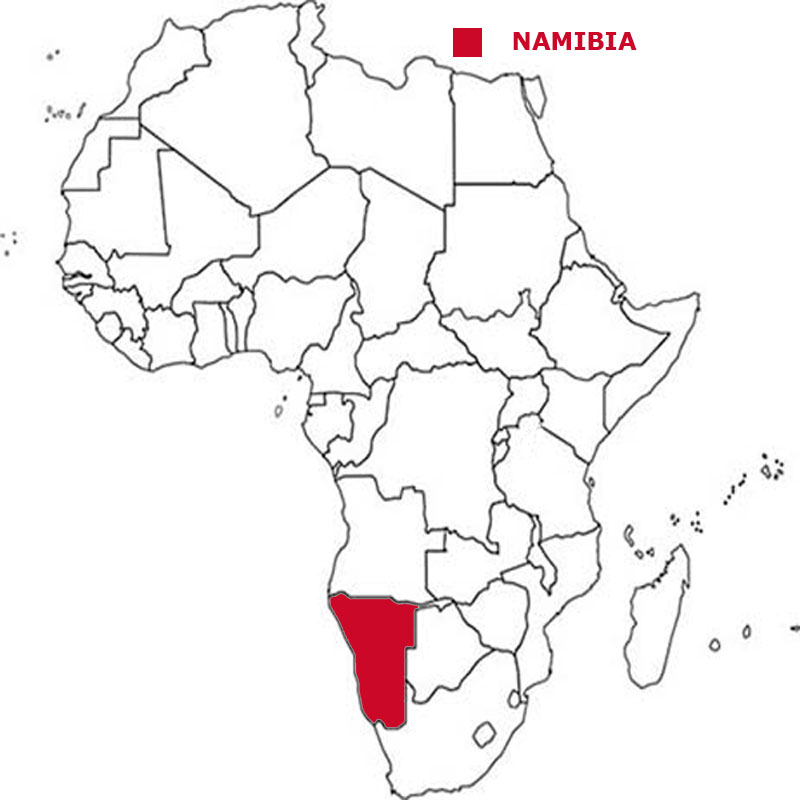

Check the weather in Windhoek now.
This is the time in Windhoek now
 The Namibian flag is a wide red stripe edged by narrow white stripes running diagonally from lower flag pole side to the top of the opposite corner.
The upper triangle formed is blue and lower one is green. There is a golden-yellow, 12-rayed sunburst on the blue triangle. Red represents the heroism of the
people and their determination to build a future of equal opportunity for all. White stands for peace, unity, tranquility, and harmony. Blue represents the Namibian
sky and the Atlantic Ocean, the country's precious water resources and rain. The golden-yellow sun denotes power and existence and green symbolizes vegetation and
agricultural resources.
The Namibian flag is a wide red stripe edged by narrow white stripes running diagonally from lower flag pole side to the top of the opposite corner.
The upper triangle formed is blue and lower one is green. There is a golden-yellow, 12-rayed sunburst on the blue triangle. Red represents the heroism of the
people and their determination to build a future of equal opportunity for all. White stands for peace, unity, tranquility, and harmony. Blue represents the Namibian
sky and the Atlantic Ocean, the country's precious water resources and rain. The golden-yellow sun denotes power and existence and green symbolizes vegetation and
agricultural resources.
Namibia is a presidential republic with a president as head of state and a prime minister as head of the government.
In elections everyone over the age of 18 can vote.
The currency in Namibia is the Namibian dollar. Namibia is a member of the Commonwealth.
English is the official language.
Hear the National Anthem
These are the anthem words
We have already written our own history of England but are asking schools in Namibia to provide us with a detailed history of
their own country. Check how here.
![]()
![]() Back to the top
Back to the top

The total land area of Namibia is 823,290 sq kms which is the 15th largest in Africa.
Namibia has lakes, rivers and canals which total 1,002 sq kms.
Namibia has boundaries with 4 countries
- Botswana 1,544 kms
- Angola 1,427 kms
- South Africa 1,005 kms
- Zambia 244 kms
Namibia has a coastline of 1,572 kms which is the 10th longest in Africa.
The highest point in Namibia is Konigstein on Brandberg at 2,573 metres.
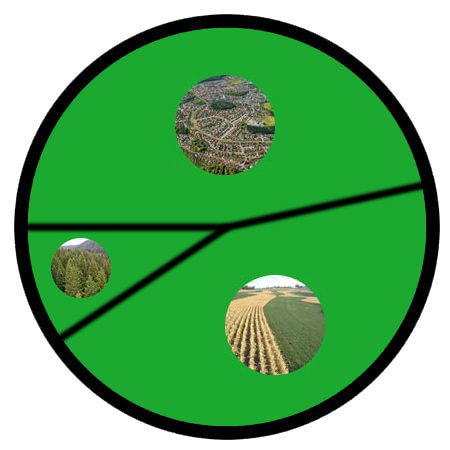

The total population of Namibia is 2.53 million people, making it the 41st largest country in Africa by population.
Of this number 1.29 million are females and 1.24 million are males.
A person from Namibia is called a Namibian.
To be a citizen of Namibia, one of your parents must be a citizen of Namibia. It is not sufficient to be born in Namibia. You have to live in Namibia for
10 years before you can begin to apply for citizenship.
The largest five cities in Namibia, by population are:-
- Windhoek 268,132 people
- Rundu 58,172
- Walvis Bay 52,058
- Oshakati 33,618
- Swakopmund 25,047
 Each little Owlbut is 1 person and
the big yellow rectangle is 1 sq km. After a while you can compare countries and see which ones are the most crowded. Remember it is only an average as
more people live closer together in towns and cities than in villages out in the country.
Each little Owlbut is 1 person and
the big yellow rectangle is 1 sq km. After a while you can compare countries and see which ones are the most crowded. Remember it is only an average as
more people live closer together in towns and cities than in villages out in the country.
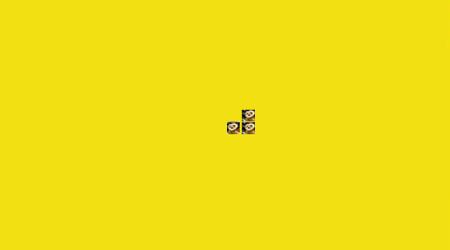
50.0% of the people live in cities or towns.

The birth rate in Namibia is 26.8 births per 1,000 of population
The death rate in Namibia is 7.7 deaths per 1,000 people.
Check this against the birth rate. If the death rate is higher than the birth rate then
the population will decrease unless immigrants arrive in the country.
There are 31.6 deaths of girls under 1 year per 1,000 of births and 36.0 deaths of boys.
The median age for females is 22.2 and for males is 20.7. The median age is that age which divides the population exactly in half so there are the same number
of people above the median age as below it.
The average age of a woman when she has her first child is 21.5.
The elderly dependency ratio is 5.8. This is the number of elderly people (ages 65+) per 100 people of working age (ages 15-64).
The potential support ratio is 17.1. This is the number of working-age people (ages 15-64) per one elderly person (ages 65+). As a population ages, the potential support ratio tends to fall, meaning there are fewer potential workers to support the elderly.
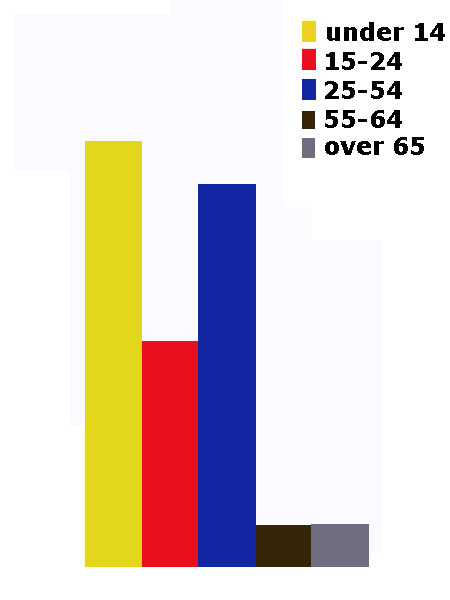
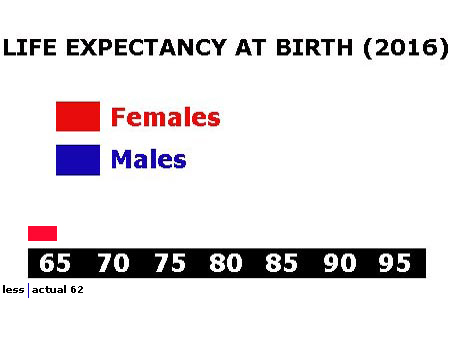

Namibia spends 8.9% of its total income on health care.
We have no figures for the number of doctors per 1,000 people.
There are 2.7 hospital beds per 1,000 people.
17.2% of the population are estimated as obese.
98.2% of the urban population and 84.6% of the rural population have drinking water that is either piped into their home or they have access to a public tap, a protected borehole, well, spring or
protected rainwater collection facility.
54.5% of the urban population and 16.8% of the rural population have access to a flushing toilet that is connected to a sewer, a pit latrine (that is a
permanent hole in the ground that is looked after) or a composting toilet.
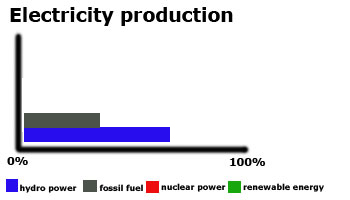
Namibia releases 4.0 million metric tons of carbon dioxide by burning fossil fuels in the process of producing and consuming energy. This puts it as the 23rd highest in Africa.

Namibia spends 3.1% of its total income on education.
Children usually start school at age 7 in Namibia. Primary education is for seven years until age 14 and secondary education can continue till 19. This may be followed
by further education at a university or college.
Generally the school year consists of 3 terms and starts in the second week of January and finishes at the beginning of December. There is usually a 4 week
break from the middle of April and a 3 week break from the middle of August.
84.5% of females and 79.2% of males are able to read and write by the age of 15.
44.9% of all people aged between 16 and 24 are not in work. Among females 52.5% are unemployed while with males 37.7% can't find work.
The total number of people available for work in Namibia is 956,800.
 They work in the following sectors.
They work in the following sectors.
- Agriculture includes farming, fishing and forestry work
- Industry includes mining, manufacturing, construction and energy workers
- Services is everything else

There are 19 paved airports in Namibia, which is the 11th highest number in Africa.
![]()
There are 2,382 kilometres of railways in Namibia, the 12th longest in Africa.
![]()
There are 44,138 kilometres of roads in Namibia, which means Namibia is in 17th place for the most kilometres of roads in Africa.
![]()
There are 4 major national newspapers in Namibia.
There are 2.65 million mobile phone users.
8% of the people have a fixed landline.

756,118 people have access to the internet at home via any device (computer or mobile).


